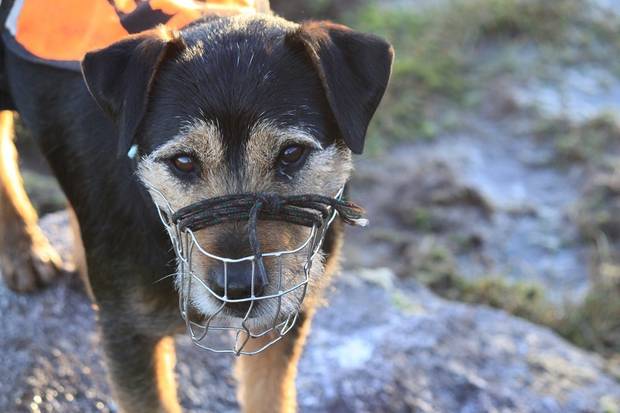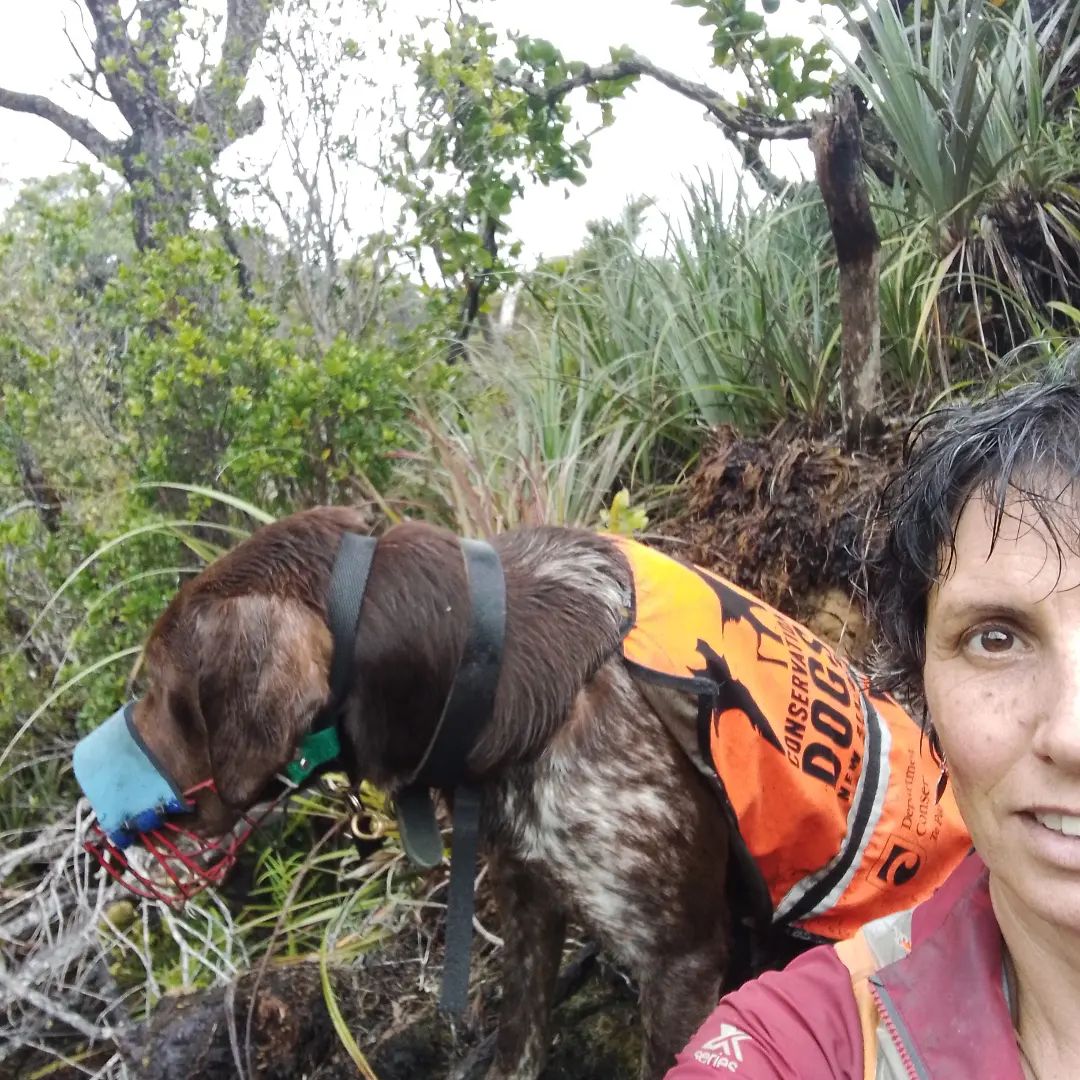 Woody, the Department of Conservation's Stoat-hunting dog, was deployed to Great Barrier Island, photograph by the Auckland Council (click here)
Woody, the Department of Conservation's Stoat-hunting dog, was deployed to Great Barrier Island, photograph by the Auckland Council (click here)
Beth McKeague (School of Biological Sciences, Queen’s University Belfast, United Kingdom) and colleagues have published early view in the journal Seabird on the value of conservation detection dog handler teams supporting the conservation of procellariiform seabirds, such as petrels, shearwaters and storm petrels.

All weathers. Joanna Sims with Miro looking for breeding Black Petrels on Great Barrier Island on a wet day, photograph from DabChickNZ (click here)
An example included in the paper is using dogs to help protect ACAP-listed Black Petrels Procellaria parkinsoni (categorized both globally and nationally Vulnerable) on New Zealand’s Great Barrier Island/Aotea.
The paper’s abstract follows:
"Conservation detection dog handler teams (CDDHTs) offer many potential benefits to the world of conservation. Seabird populations are an important component of marine ecosystems. However, they are threatened by several anthropogenic activities, including the introduction of invasive species. Although CDDHT can support seabird conservation through invasive species management efforts and population assessments, they are under-utilised. A lack of methodological standardisation within CDDHT work and the under-publishing of their use within seabird research leads to difficulties in conducting new CDDHT seabird-related studies due to an inability to learn from previous research. This study aimed to address these shortcomings by investigating the techniques and methods used by those actively working with, or planning to work with, CDDHT on a seabird project to better understand them, and propose best practices in the field. Seven professionals who have used, or will use, CDDHT as part of a seabird project (four handlers, three ecologists/researchers) participated in structured written surveys which were thematically analysed. Five superordinate themes emerged from the survey data: Training, Location, Role of Handler, Wildlife Considerations, and Dog Selection Criteria, with the first two themes having several subordinate themes. A summary of best practices was developed from the findings, with notable recommendations including preparation across all project elements, networking with other professionals, and making judgments on the use of techniques like discrimination and field trials based on the specific project and dog(s). These results can serve to benefit future seabird studies involving CDDHT as well as supporting the development of standardisation in the CDDHT field."
Read about an ACAP-funded secondment of a detection dog-handler from the South Atlantic to New Zealand’s Conservation Dogs Programme, managed by the Department of Conservation here.
Reference:
McKeague, B., Chapman, S., Cripps, R., González-Solís, J., Hartman, J., Johnson, K., Kerrigan, P., McClelland, G.T.W., Militão, T., Smith, H. & Finlay, C. 2024. Recommendations for the use of conservation detection dogs in seabird research: a thematic analysis. Seabird 36(2) doi.org/10.61350/sbj.36.2.
John Cooper, Emeritus Information Officer, Agreement on the Conservation of Albatrosses and Petrels, 09 April 2024

 English
English  Français
Français  Español
Español